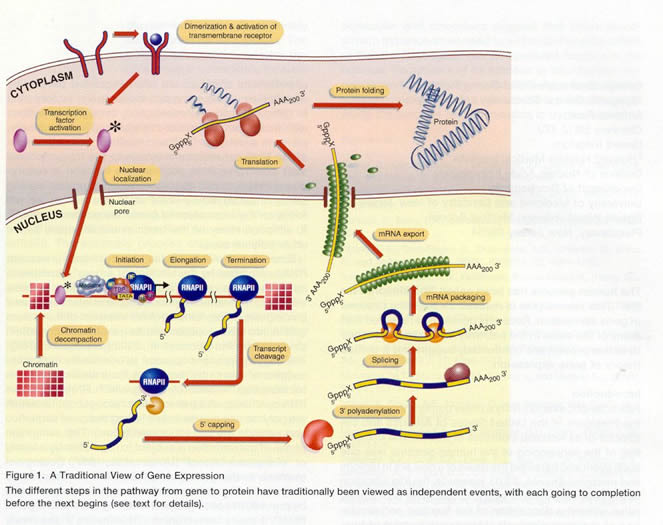
Genetics
http://www.dnaftb.org/dnaftb/26/concept/index.html
Traditional complexity of the process invlovng RNA, DNA, and proteins in gene expression

December 1999,
the first human chromosome [#22] was completely sequenced having 33.5 million bps (base pairs of DNA nucleotides)
1 bp = .3 nm (nanometer) long
10 bp = 3 nanometer
35.000 genes in the human genome
June 2000.initial working genome of the Human species was published
Only 5% of the human genome codes for proteinsOver half of human DNA is repeated or redundant, so called "junk" sequences.
Magnitude
The Green Florescent Protein (GFP) is coded for by a single gene in Jellyfish (Aequorea victoria) that cause the creature to glow.
About 1000 genes account for the Olfactory sense in mammals and humans have only 60% of these sequences activated.
We have too few genes as humans.
What are genes?
Keller, The Century of the Gene
Richard Lewontin on genetics
Genome, unseen aspects by Wyatt Gibbs
James Watson, The Double Helix
Sources:
DNA, James Watson
The Human Genome, editor of Nature
The Century of the Gene, E. Fox Keller
The Triple Helix, Richard Lewontin
Genetics | Science Index | Site Analysis | Population Index | Global Warming Index | Nature Index | Brief